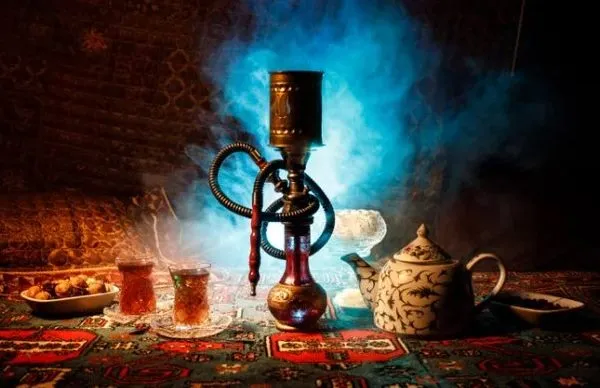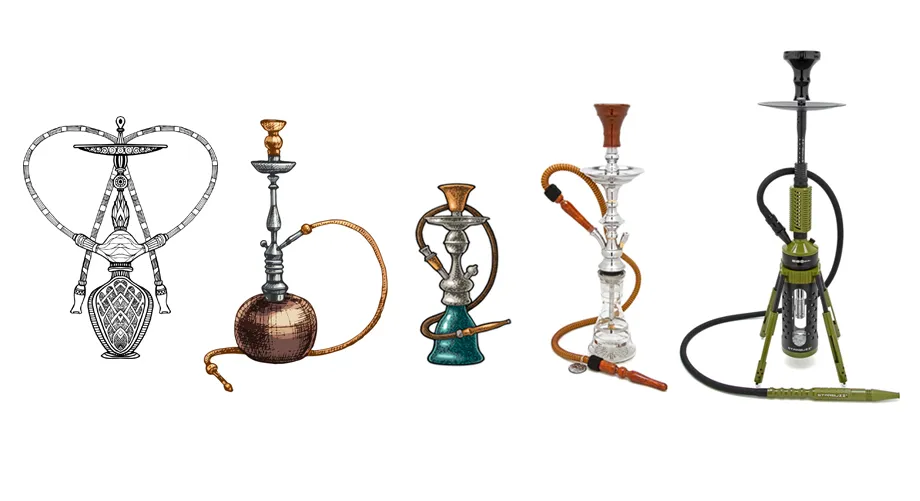
The History and Culture of Hookahs in Turkey
Introduction Hookahs are water pipes used for inhaling flavoured tobacco or herbal blends. The mouthpiece,
Introduction

Hookahs are water pipes used for inhaling flavoured tobacco or herbal blends. The mouthpiece, bowl, hose, and main body are its four primary components. Tobacco or herbs are smoked in the bowl, which is heated by charcoal or electric coils. The smoke is cooled and filtered by the water in the body. The smoke is inhaled through the mouthpiece, which is attached to the body by a hose.
The original meaning of the word hookah was “coconut” in Persian. This is because the original hookahs, which originated in India, were fashioned out of coconut shells. To the east, hookah became known as narghile; to the west, it became shisha throughout the Arab world. The Ottoman conquests of the 17th century brought hookah to Turkey.
Hookah’s popularity skyrocketed in Turkey, particularly among the country’s educated elite. It was considered a social norm and a symbol of one’s social standing. The art, architecture, religion, politics, and other aspects of Turkish life have had an impact on hookah, making it a cultural icon of the country. Cafes, restaurants, bars, and other public gathering places were all impacted by the popularity of hookah among Turkish citizens. Smoking habits, legislation, public awareness, and other factors all had a toll on Turkey’s health and environment after the introduction of hookah.
In this piece, we’ll delve into the history, different varieties, and cultural impact of hookah in Turkey. Hookah bowls have progressed from coconuts to ceramic tiles to silver and glass. The many materials, sizes, and designs of hookahs will also be examined. We’ll also examine the ways in which the widespread use of hookah has changed social and recreational life in Turkey. By the end of this article, you will have a firmer grasp on the cultural significance of the hookah in Turkey.
Development of Hookah in Turkey
The Ottomans are credited for introducing hookah to Turkey in the 16th century. The Ottoman Empire spanned more than six centuries and controlled large swaths of Asia, Africa, and Europe. They were celebrated for their artistic, scientific, literary, and other creative endeavours, as well as their openness to other cultures.
Hookah originated in India, Iran, and the Arab world, but was embraced by the Ottomans. They changed it to suit their individual preferences.Hookahs were fashioned from a wide variety of materials, including coconuts, gourds, porcelain, and metal. They additionally embellished them with designs and patterns taken from their own artwork and structures.
The Ottomans elevated hookah use to a social rank. The sultans and their courtiers enjoyed using it in the gardens and palaces. Scholars and poets used it in their libraries and classrooms as well.Everyday people used it too, in their homes and communities.
The Ottomans popularised the use of hookahs as a social activity. The purpose of this was to unwind and have fun. Conversation and other forms of communication relied on it as well. Friendship and hospitality were also signified by this term.
Types of Hookah in Turkey

Hookahs in Turkey come in a wide variety of styles, sizes, materials, and decorations. Depending on your specific goals and tastes, each option has benefits and drawbacks. Some instances of each category are listed below.
- Wooden hookahs: Hookahs made entirely of wood are referred to here. Intricate patterns are typically carved into them or painted onto them. They are long-lasting and beautiful, but they can be cumbersome and pricey.
- Metal hookahs: Hookahs with metal bodies are referred to as “metal hookahs.” Typically, they are plated in silver or gold and constructed out of brass or copper. They’re glitzy and hip, but they’re also noisy and can get rather hot.
- Glass hookahs: Glass hookahs are water pipes with glass bodies. They might be clear or coloured with special effects. They’re easy on the eyes and contemporary, but can be a pain to keep clean.
- Mosaic hookahs: These hookahs have mosaic bodies and are commonly used in the Middle East. Ceramic tiles or glass mosaics in geometric or floral designs are commonly used to cover them. They have a lot of personality and flair but can be cumbersome and easily broken.
Significance of Hookah in Turkey
Hookah is an integral part of Turkish culture and identity. It demonstrates the impact of Turkey’s contacts with distant cultures, such as those of India, Iran, the Arab world, and Europe. It also exemplifies Turkey’s diversity and tolerance by catering to a wide range of individual preferences. It’s a reflection of Turkey’s ingenuity that the country has adapted hookah to suit its own tastes.
The Turkish people’s social lives and recreational pursuits are profoundly impacted by hookah. It makes for a pleasant setting in which friends and family may hang out. It also makes it easier for people from different walks of life to have meaningful conversations with one another. In addition, it encourages people with similar interests to get to know one another and form lasting friendships.
The use of hookahs in Turkey has serious consequences for public health and the environment. As an added bonus, it may also stimulate appetite and digestion while decreasing tension and anxiety. Additionally, it can increase the risk of developing lung and heart problems, as well as cancer and other disorders. Smoke and ash can be produced, charcoal and electricity used, and trash and pollutants can be created.
Conclusion
To sum up, a hookah is a water pipe used to inhale flavoured tobacco or herbal mixes. First appearing in India, the practise has now made its way to Iran, the Arab East, and Turkey. Eventually, other materials, such as ceramic tiles, silver, and glass, replaced coconuts in use. The materials, sizes, forms, and styles used to make them all were different.
The hookah has deep cultural roots in Turkey. It symbolises Turkey’s cultural identity by demonstrating the country’s sway, diversity, creativity, and originality. Because it fosters a mood that is at once welcoming and comfortable, it has an impact on the social and recreational pursuits of Turks. It has both positive and negative consequences on Turkey’s health and environment, depending on how it is put to use.
You Can Also Read Here Ryan Martin: The King of Street Outlaws?
